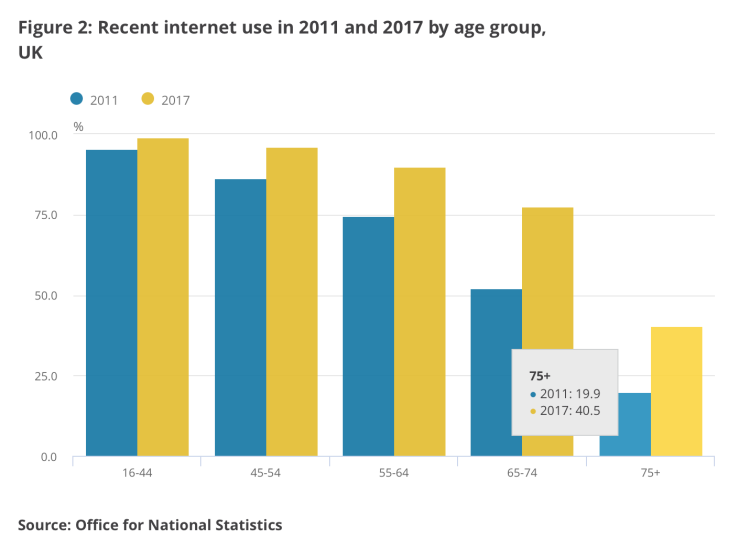Background: The information society is ever changing and as a result bring about new forms of inequality. Even in countries where the majority of people use smartphones, those who are economically disadvantaged lack a basic access to digital resources and so also lack the skills to use them effectively (Robinson et al., 2015). In a climate where people are expected to be digitally literate, this is very limiting when it comes to job opportunities. DiMaggio & Garip, (2012) found digital inequalities actually reinforce existing social inequalities and can even exacerbate them as they carry over preexisting differences in human capital into online settings.
Current Statistics: When researching current statistics I found that in 2017, almost 1 in 10 adults had never used the internet. I had never considered that in the digital era we are currently in that such a large proportion of the nation have never used the internet before. Finding out that of the 4.8 million adults who had never used the internet in 2017, just over half (2.6 million) were aged 75 years and over made more sense to me, however I still felt this was a large amount (Ons.gov.uk, 2018). The graph below illustrates the variation within the age groups and how this has changed in recent years.

As well as differences across age groups, there are also differences in how people connect to the internet.


A video I created on digital differences using powtoon.
Having realised the numerous factors that affect access I decided to conduct my own assessment. Looking at the results below, I am aware how different these results may be for those from more of a disadvantaged background. On a larger scale, there are vast differences among developing countries ability to produce or to effectively use ICTs and participate in the global economy (Avgerou and Madon, 2009).

Word Count: 293
References:
- Ons.gov.uk. (2018). Internet users in the UK – Office for National Statistics. [online] Available at: https://www.ons.gov.uk/businessindustryandtrade/itandinternetindustry/bulletins/internetusers/2017 [Accessed 25 Feb. 2018].
- Robinson, L., Cotten, S., Ono, H., Quan-Haase, A., Mesch, G., Chen, W., Schulz, J., Hale, T. and Stern, M. (2015). Digital inequalities and why they matter. Information, Communication & Society, 18(5), pp.569-582.
- Zickuhr, K. and Smith, A. (2018). Digital differences. [online] Pew Research Center: Internet, Science & Tech. Available at: http://www.pewinternet.org/2012/04/13/digital-differences/ [Accessed 25 Feb. 2018].